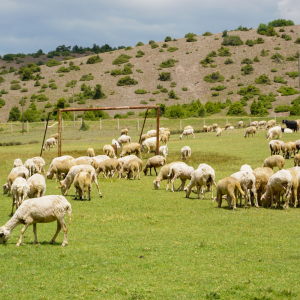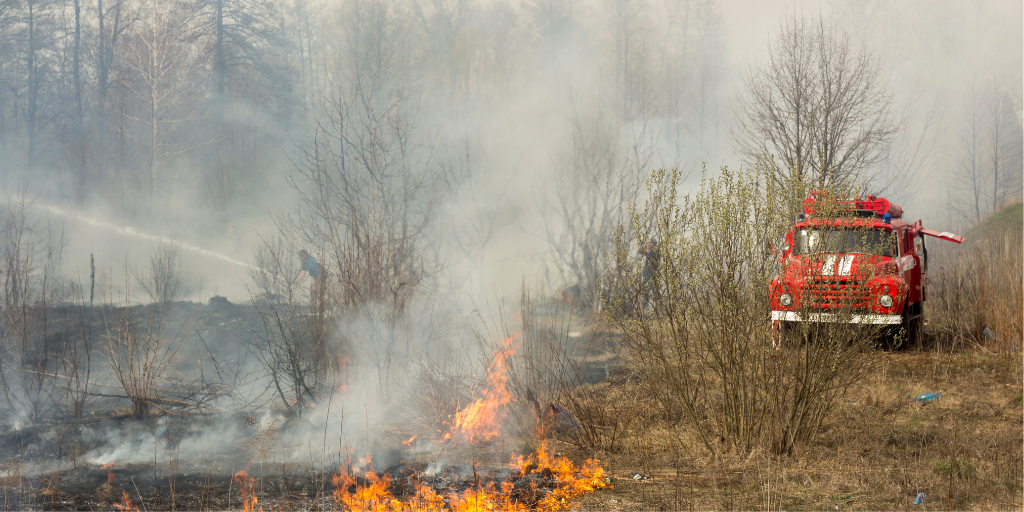Every year, wildfires wreak havoc on farms, causing extensive damage to crops, livestock, and infrastructure. With the increasing frequency and intensity of wildfires over the last decade, many farmers are embracing wildfire-resilient agricultural practices to mitigate risk and losses. By taking proactive measures, farmers can minimize the risks associated with fires and protect their livelihoods in the event of an emergency. In this article, we will take a look at some key strategies and practices that farmers can implement to enhance their wildfire resilience and safeguard their farms.
The majority of fire mitigation strategies we will look at all follow the same guiding principles: preventing fires by reducing fuel load and eliminating ignition sources, and decreasing risk through preparation and planning if a fire does occur.
Around Your Home
There are a variety of home maintenance checks you can perform around your residence to help decrease the risks of wildfire spreading to your home. Regularly clean eavestroughs of leaves and branches, and ensure that shingles are in good condition. Keep your property clear of branches, leaves, and dead plant matter, as they can serve as fuel for wildfires.
1. Create defensible space:
Creating a defensible space around buildings is essential for protecting your home from wildfires. Manage vegetation within a designated perimeter to establish a buffer zone free from flammable materials. By removing or reducing vegetation that could act as fuel, you create a barrier that helps slow down the spread of fire and provides a safer zone for your property. Clear space around your buildings will also help to allow access for firefighters in the event of a fire and provide them with a safer space to stand in the event of an emergency.
2. Design a fire-resilient garden:
Selecting fire-resistant plants for your home landscaping can significantly contribute to wildfire resilience. Fire-resistant plants typically have high moisture content and a low volume of dead or dry material, making them less likely to ignite. When burned, these plants don’t contribute large amounts of fuel or heat and don’t accelerate the spread of fire. Coneflowers, delphiniums and daylilies, and more fire-resistant plant options are covered extensively in the Oregon State University fire-resistant plants for home landscapes guide.



3. Keep your driveway clear:
Maintaining a clear and accessible driveway is crucial for emergency vehicles to reach your property quickly. Ensure your driveway has a 4x4 meter (about 12x12 feet) clearance, allowing ample space for emergency vehicles to maneuver. Visible signage at the entrance of your driveway is particularly important for farms situated away from the main road, enabling firefighters to locate your property easily during emergencies.
Around the Field
Minimizing the accumulation of flammable materials in the field is vital to reducing the spread and intensity of fires.
4. Controlled burning:
Depending on your location, conducting controlled burns, subject to appropriate conditions and permits, can effectively reduce the risk of uncontrolled wildfires in agricultural fields. Controlled burns involve intentionally burning excess vegetation under tightly monitored circumstances. This practice removes accumulated fuel and decreases the likelihood of severe wildfires by promoting healthier vegetation growth and reducing fire-prone materials.
5. Targeted grazing:
Targeted grazing practices strategically deploy livestock to graze on dry vegetation in and around fields. By rotating the grazing schedule across their fields, growers can leave the weed management to the experts to remove invasive and troublesome weeds, clear excess vegetation, and even clean up last year's leftover crop. This helps to reduce the fuel load, limiting the intensity and speed at which wildfires can spread.



6. Establish fuel breaks:
These are wide strips of land that are regularly mowed or grazed to create a break in vegetation continuity. Fuel breaks act as barriers, impeding the progress of wildfires and reducing the availability of fuel for combustion. Another option to reduce wildfire spread is the use of agroforestry buffers. Like fuel breaks, agroforestry buffers are wide strips of land along the edges of fields that are left unploughed and are planted with native plants and trees to create windbreaks, reduce erosion, and improve local biodiversity.
7. Use compost:
Maintaining healthy soils is crucial in enhancing wildfire resilience in agricultural fields. Soils with a higher organic matter content have improved water-retention capacity, acting as a buffer against wildfires. Implementing practices such as composting can increase organic matter, enhancing soil moisture retention. Healthy soils also reduce the risk of soil erosion, which can contribute to the spread of wildfires.
Around the Barn
Around the barn and outbuildings, safety planning and emergency preparedness are the best tools to prevent fires.
8. Safe Storage:
Proper storage of chemicals and fuels, along with adherence to no smoking rules and the placement of signage in every building, are critical precautions. If you have a woodpile, ensure it is located at least 30 feet away from structures, reducing the likelihood of fire spreading to your home or barn. Additionally, keep the area surrounding the woodpile clear of combustible materials.
9. Be prepared:
Make sure that fire extinguishers are accessible and well marked in barns and outbuildings. Equip vehicles, including tractors, with fire extinguishers as well. Regularly check and ensure the functionality of smoke detectors and run fire drills on a regular basis to educate and train farm personnel on emergency procedures. By establishing communication protocols, such as staying informed about fire warnings and evacuation plans, you can respond swiftly and effectively in the event of a wildfire.



The most important priority during a fire is your safety and that of your workers, so make sure you have a clear plan in place. Remember, being prepared for emergencies is crucial in safeguarding your farm and protecting the well-being of everyone involved. By taking these proactive steps and prioritizing safety measures, you can significantly reduce the risks associated with wildfires and ensure the resilience of your agricultural operation.
Croptracker develops agtech solutions for industry leaders. Located in Eastern Ontario, Canada, our mission is to make crop production safer, more efficient, and more profitable. Designed in partnership with fresh market producers and distributors, every tool we create is based on direct industry feedback.
Interested in learning more about Croptracker? Learn more about our Farm Management Software, or book a demonstration to schedule a meeting with our product experts.


